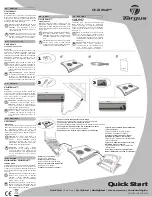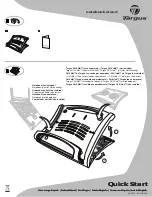
11.The vehicle is driven on a road which tilts left or right, or a winding road.
conditions during driving (poor roads or road seams)
or the beam axis has deviated.
18.The vehicle has just changed lanes or crossed an intersection.
front of a tollgate or checkpoint, or at intersection, etc.
20.The white (yellow) lines are cracked are cracked, “Raised pavement
marker” or stones are present
21.The white (yellow) lines cannot be seen or are difficult to see.
22.The vehicle is driven on a road surface that is wet due to rain or puddles.
23.The traffic lines are yellow (which may be more difficult to recognize than
lines that are white).
24.The white (yellow) lines cross over a curb.
suddenly, such as at the entrances and exits of tunnels.
28.The vehicle is driven on a crooked road.
29.The vehicle is driven in an area that has very poor/no GPS signal.
Introduction to FCWS
a. The Forward Collision Warning System uses a camera to detect vehicles
in front of your vehicle.
b. When the system determines that the possibility of a frontal collision is
high, a warning activates and the forward collision warning icon appears
for 3 seconds on the DVR screen to urge the driver to take evasive
action.
19.The vehicle is driven in an area without white (yellow) lines, such as in
25.The vehicle is driven on a bright surface, such as concrete.
26.The vehicle is driven on a surface that is bright due to reflected lights.
27. The vehicle is driven in an area where the brightness changes
Please read this manual for proper operation and keep it for future reference.
12/22
12.The vehicle is driven on an unpaved road or rough road.
13.The vehicle is driven around a sharp curve.
14.The traffic lane is excessively narrow or wide.
15.The vehicle is moving up and down a large amount due to road
16.The headlight lenses are dirty and emit a faint amount of light at night,
17.The vehicle is struck by a crosswind.
AVANZA - MAY - 2019 - 001
SECTION 6.2
Forward Collision Warning System <FCWS>
6.2.1











































